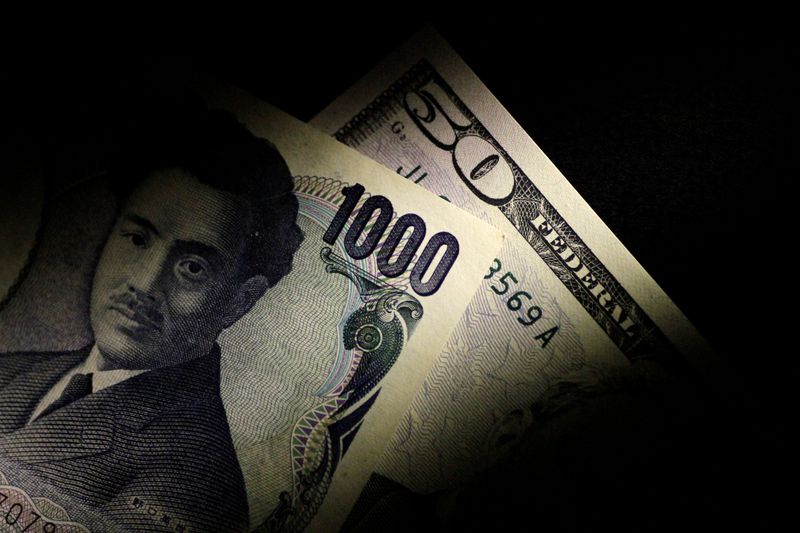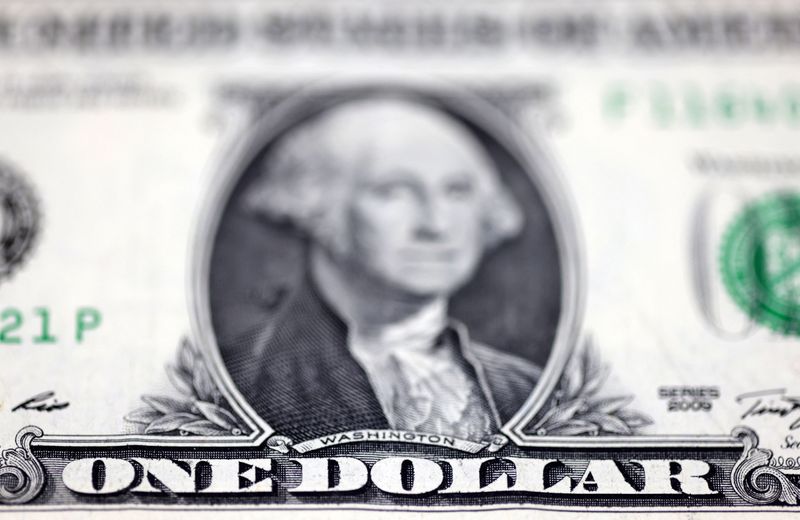By Hannah Lang and Saqib Iqbal Ahmed
NEW YORK (Reuters) -The dollar recovered ground against most major peers on Tuesday and the Japanese yen steadied around seven-month highs against the U.S. currency, as some of the more striking moves of recent days reversed somewhat and a semblance of calm returned to markets.
The dollar was last at 145.01 yen, up 0.54% on the day, after tumbling against the Japanese currency for five straight sessions. The greenback has fallen nearly 6% against the yen over the last five trading days.
A reassessment was also taking place across equity markets, with Japan's benchmark Nikkei index gaining 10% on Tuesday after a 12% fall the day before, while shares in Europe also tried to recover. [MKTS/GLOB]
"I wouldn't be surprised if the volatility in the market isn't over yet, but ,clearly, the very substantial moves we had yesterday have somewhat normalized," said Axel Merk, president and chief investment officer of Merk Investments.
The yen's recent gains were driven by an uptick in volatility, causing investors to bail out of once-popular carry trades, reinforced by the Bank of Japan raising interest rates on Friday.
So-called carry trades, which involve investors borrowing from economies with low interest rates such as Japan or Switzerland to fund investments in higher-yielding assets elsewhere, rely on lower volatility.
"It looks as if some of the moves over the last couple of days were overdone," Karl Schamotta, chief market strategist at Corpay.
"We are seeing safe haven demand dissipating, and flows sort of reverting back to normal across most of the major currency pairs," he said.
The dollar index was last up 0.087% at 102.96.
The Swiss franc was little changed on the day against the dollar after advancing about 4% since July 29.
Like the yen, the Swiss franc - another favored funding currency for carry trades - strengthened sharply since mid-July as those trades were unwound, with gains reinforced by safe haven flows on Monday.
The carry trade unwind combined with softer-than-expected U.S. job data on Friday, and disappointing earnings from major tech firms triggered a global equity sell-off, further reinforcing the unwind.
On Tuesday, the dollar also regained ground on the euro and pound, with the common currency off 0.21% at $1.0928, having hit a seven-month high of $1.1009 during Monday's turmoil.
Sterling was down 0.64% at $1.2697, its lowest in five weeks, as the Bank of England's rate cut last week undermined one of the pillars of its strength earlier in the year.
Also underpinning currency market moves are traders' attempts to price U.S. Federal Reserve policy in the coming meetings.
Traders now expect 110 basis points (bps) of easing this year from the Fed, pricing in a nearly 70% chance of a 50 bps cut in September, down from 85% on Monday, according to the CME FedWatch tool.
U.S. central bank policymakers pushed back on Monday against the notion that weaker-than-expected July job data means the economy is in recessionary freefall, but also warned that the Fed will need to cut rates to avoid such an outcome.
The Australian dollar was last up 0.55% at $0.6533, after comments from Reserve Bank of Australia Governor Michele Bullock, who suggested rate cuts were still far away.

Australia's central bank held interest rates steady on Tuesday as expected, while reiterating that it was not ruling anything in or out to control inflation.
In cryptocurrencies, bitcoin was up 4.26% at $56,725, rebounding from a near six-month low of $49,445 touched on Monday.
